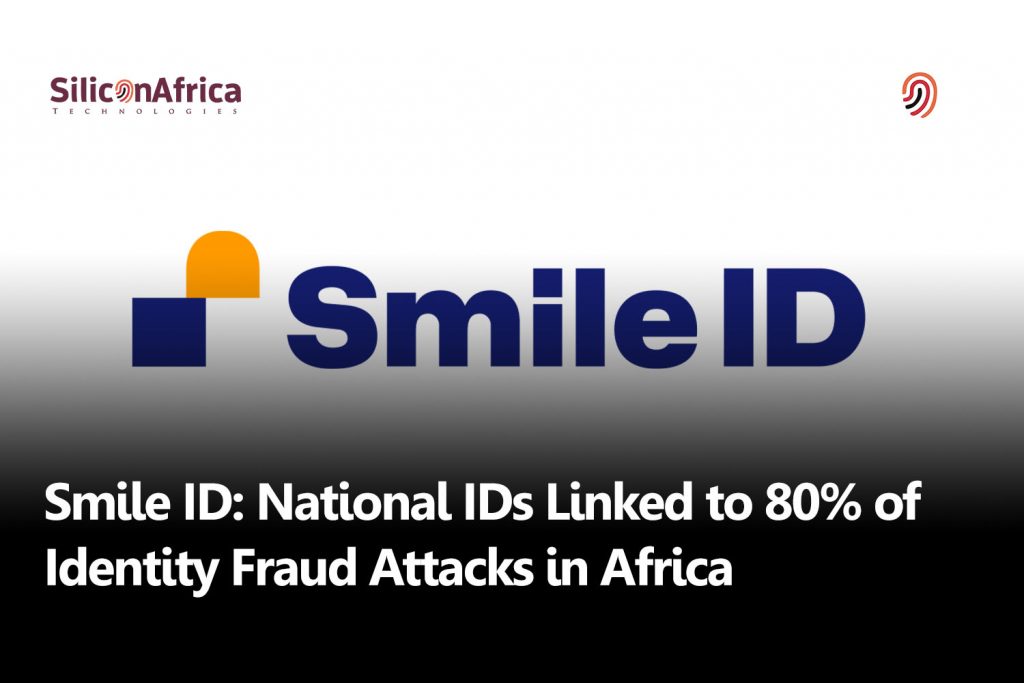Physical Address
60 Ekwema Cres, Layout 460281, Imo
Physical Address
60 Ekwema Cres, Layout 460281, Imo

“National IDs are the most targeted document type for identity fraud attacks on the continent,” said Smile ID, a leading digital KYC provider in Africa.
After analyzing over 100 million identity verifications conducted in the past five years, Smile ID’s report reveals that a staggering 80% of fraud attacks in Africa specifically focus on national IDs.

The report highlights the rate at which Africa’s IDs are particularly vulnerable to attacks. As the number of national ID documents in circulation continues to rise, the risk of them being lost or stolen increases, leaving holders susceptible to document fraud.
In Africa, many businesses rely on government-issued IDs like driver’s licenses, international passports, voter’s cards, and national identity numbers (NIN) for customer onboarding and Know Your Customer (KYC) procedures. Consequently, fraudsters continuously seek ways to bypass these processes, especially in financial services, by using counterfeit, obscured, expired, or stolen IDs.
To combat document fraud, businesses have two common approaches. They can verify the validity of IDs by cross-checking with ID authority databases or utilizing document verification techniques that compare the ID document with authentic templates and security features to identify inconsistencies.
Interestingly, Smile ID’s report highlights that 37% of detected document fraud cases were caught due to the biometric component in their document verification solution. Without biometric checks, it is estimated that over a third of ID document fraud would go unnoticed.
However, startups and providers like Smile ID and Dojah often face challenges when trying to verify user information and prevent fraud due to the National ID service occasionally going offline. In 2022, Smile ID experienced downtime approximately 6% of the time while performing these crucial checks.
It’s important for businesses and service providers to remain vigilant in the face of increasing identity fraud attacks and continue to implement robust verification measures to protect customers and maintain the integrity of their platforms.
When it comes to advanced prevention tools for biometric fraud, there are a few key technologies that are commonly used. One example is liveness detection, which ensures that the biometric being captured is from a live person and not a spoof or fake representation. This can involve techniques like facial movement analysis or asking the user to perform specific actions during the biometric capture process.
Another tool is biometric template protection, which involves encrypting and securely storing the biometric data in a way that it cannot be reverse-engineered or used to recreate the original biometric. This helps protect against unauthorized access or misuse of the biometric information.
Read also: Smile ID Hits a Significant Milestone of 100 Million Verification
Additionally, there are continuous authentication systems that monitor and analyze the user’s biometric data throughout their interaction with a system or service. This helps detect any anomalies or changes in the biometric pattern that could indicate fraud or unauthorized access.
These are just a few examples of the advanced prevention tools that are used to combat biometric fraud. The field of biometric security is constantly evolving, with new technologies and techniques being developed to stay one step ahead of fraudsters.
According to Smile ID’s co-founder and CEO, Mark Straub, it is crucial for African governments to establish a user-friendly and reliable ID infrastructure. Smile ID has implemented “fail safes” to ensure that all data sent to them is processed, as national ID infrastructures often experience frequent interruptions, causing inconvenience for everyone involved.
Interestingly, the targeting of women’s IDs has increased, now nearly on par with male-owned IDs, whereas in previous years, male IDs were primarily targeted. While biometrics are being adopted by more businesses in Africa for identity verification and fraud prevention, fraudsters are also finding ways to bypass these systems. Smile ID emphasizes that biometric fraud is more complex than document fraud and requires advanced prevention tools for detection.
Smile ID identifies four primary methods used by fraudsters to manipulate biometrics: no face match, spoofing, duplication, and generative AI (like deep fakes). Last year, the most common type of biometric fraud attack identified by Smile ID was “no face match,” accounting for 48.5% of all cases, followed by spoofing.
However, Smile ID’s report highlights that businesses relying on biometric verification are four times more secure than those relying solely on textual verification. By layering biometric authentication on top of textual verification during onboarding processes, businesses can enhance their security measures.